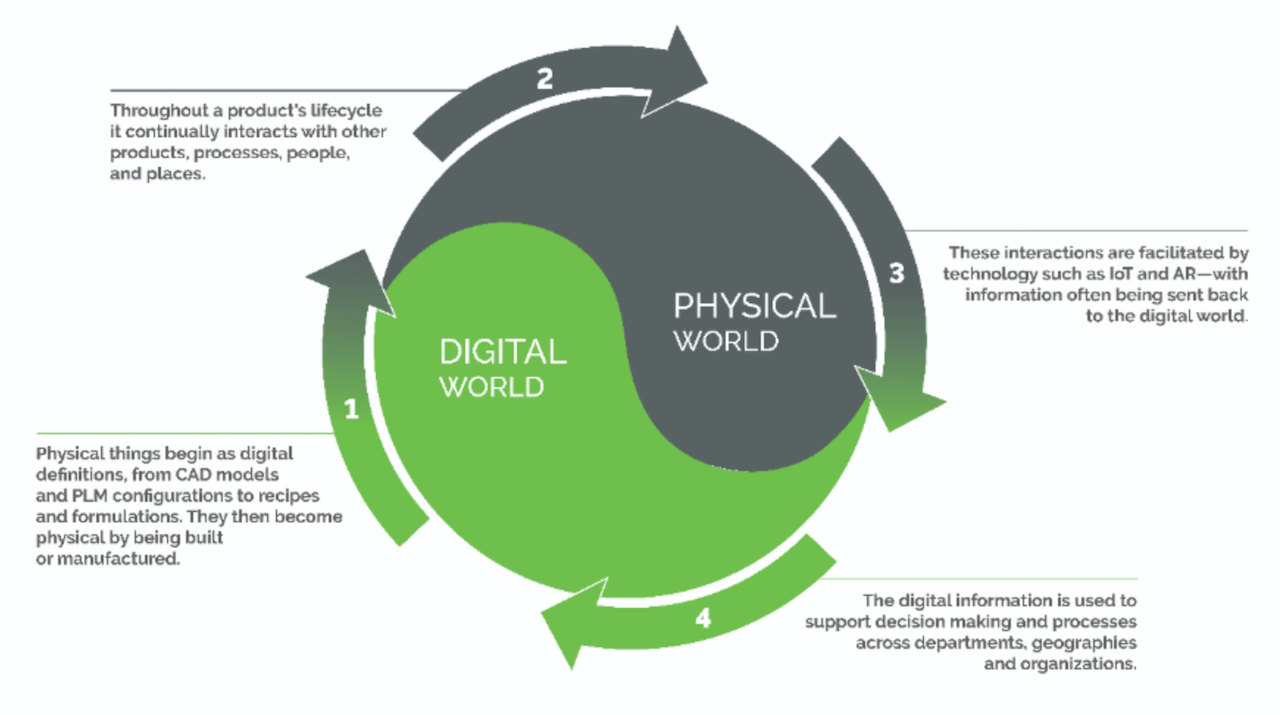Leadership
10 Trends In The '20s To Alter Homebuilding: #7 Digital Thread
The years leading up to 2030 will sharpen the non-optional value-generating potential of digital thread as an operational bulwark that engages each customer in an investment in what they value, and the removal of any feature, process, or characteristic that they don't.

Two-hundred-fifty days to the day have passed since The Builder's Daily said "hello." Between that new beginning, April 15, and today, we've produced exactly 283 stories for our audiences, a collective Google Analytics tells us amounts to about 25,000 users, and 40,000 sessions. We're as grateful to be here today as ever, and look forward to fulfilling an essential purpose of hosting, connecting, prodding, and celebrating residential homebuilding, development, and technology solutions seekers at their best.
In those 250 days – as I scan the headlines for patterns and trends – a persistent if arrhythmic pulse taps a faint beat. I pick it up, coursing through the stories, dating back to Spring 2021 and even earlier, and continuing, with ever more pronounced percussive volume into early 2022. Here's a sampling of 10:
- 3D Home Printing For Skeptics: Harbinger Or Fringe Phenom?
- Lennar, ICON Plan 100 3D-Printed Homes, Co-Designed By BIG ...
- Fiber-Timber Bamboo Crops Up As A Spruce, Pine, Fir Alternative Of The Future
- RIP Katerra: A Bold Play That Failed To Get A Real-World Footing
- Builders FirstSource Antes $450M In Paradigm Power Play
- Why Factories Produce Only 3% Of New Homes In The US
- Tracy Reboot: VBC Breathes Life Into Plant Out Of Katerra's Ashes
- How The Tiniest Details In A New Home Could Change Real Estate
- Synergos — A Unit Of Japan's Asahi-Kasei — Buys AZ's Brewer Companies
- AZ-based Mosaic, Builder's Builder, Taps $44M To Go Big Now
You may not detect in these 10 stories the same central theme I do. That's okay. There are plenty more examples I could pull out of TBD's archive, each of which tap into a pool of wisdom I'll recap in three meaningful quotes that lead – literally – to a common thread.
Quote one, from Lennar executive chairman Stuart Miller:
We're working to design and build precisely only what our buyer values, and to remove, precisely, anything our buyer doesn't value."
Quote two, from Patrick Hamill, chairman and ceo of Denver-based Oakwood Homes, a Clayton Homes company.
What I'd like to achieve one day is to get our processes as builders out of the way of what our consumers want in their homes and start first with the consumer and then map their values to what we produce and how we produce it."
Quote three, from founder and former-now retired ceo and chairman of The New Home Company Larry Webb.
The two important questions we ask every day we come to work are these. Who are we? And who do we want to be?"
Taken together, these three quotations drive directly to a single motif – the value connect that ties homebuilders to the customers who buy or rent new homes.
Transformation Trend No. 7 – digital thread
Assertion: The next eight years leading up to 2030 will sharpen the non-optional value-generating potential of digital thread as an operational bulwark that engages each residential buying or renting customer in an investment in what they value, and the removal of any feature, process, or characteristic that they don't value.
What it means for homebuilders and their business partners
That connect – the intricacies of human homing with the intricacies of people designing, planning, financing, and assembling homes – is inflecting as technology races exponentially up and forward, and as people's use of technology transforms exponentially as well.
Laura Dwyer, business development leader at DuPont Performance Building Solutions, was the first person I heard who gave both visual and verbal meaning to the connect through the term "digital thread."
She spoke precisely, if hypothetically, about a not-so-far-off day where a soup of catchy tech and consulting terms – just-in-time lean manufacturing, design thinking, mass personalization, single-source-of-truth, omnichannel marketing, machine learning, etc. – would chisel into a sharpened-pencil of a way to describe the value stream tying a 450-SKU home assembly process to the needs, desires, and values of a person or people who live in that home.
The term digital thread reportedly popped into being in a 2013 Global Horizons report for the U.S. Air Force, as a game-changer.
Cross-domain, advanced physics-based modeling and simulation tools can reduce development cycle time by 25% through in-depth assessment of the feasibility and cost of integrating technologies into a system; provide data-rich assessment of cost and requirement trades; identify technology not ready for incorporation; quantify risk at critical decision points and avoid late defect discovery... The cross-domain, digital surrogate becomes the authoritative knowledge source managed across the system's life-cycle."
Pare back the layers of this military-style gobbledygook, and you start to hear both Stuart Miller and Pat Hamill's assertions, each underlined and energized by Larry Webb's essential identifying principal – who we are and who we want to be as ones who care about who we serve as customers.

Here's another take on digital thread, this one less full of jargon.
A digital thread creates a closed loop between digital and physical worlds to optimize products, people, processes, and places. With the technologies available today, a holistic digital thread spans the entire product lifecycle that takes place within a company and extends outward to suppliers, customers, and products and people in the field."
For systems like homebuilding that are defined by their intricacy, digital thread becomes a filter and clarifier, sieving out the extraneous and sculpting in the valuable.
Digital thread as a strategic and operationalized platform takes the best of what has grown up in construction over the ages and leaves the rest. It does so because it compresses consumer aspiration, preference, and wherewithal into a single, unified amalgam that drives design, architecture, product spec, and total lifecycle – raw material, structural value, and livability – investment and return.
Further, as digital threads become helices at the community level, they will serve to help gain traction, decipher impediments, or recognize impasse points among localities as well, ultimately one of a homebuilder's critical risk-reward tools in a building lifecycle that demands enormous upfront investment for a time-lapsed, conditional return.
For producers, the choice, resolution, and investment will be either to get closer to customers' triggers and decisions by relating to them and making "the promise" to them meaningful, or to drift apart into a sea of others whose process and structures lie in the way. It's about intimacy versus intricacy, and the time between now and 2030 will serve to clarify who gets that and who doesn't.
Join the conversation
MORE IN Leadership
Tri Pointe's Long Game Bets On Disciplined Growth, Not Speed
Strategic patience over sales velocity. Tri Pointe reins in starts to protect margins and wait for stronger demand from resilient move-up buyers.
PulteGroup Tacks Steady Amid Flux, Leans Into Predictability
A top-tier performer in margin discipline and strategic execution, PulteGroup stays its course while peers lean into pace or price. Q3 results show the Atlanta-based builder threading a needle few others can.
Taylor Morrison’s Dual-Track Discipline Is Paying Off
In a stop-and-start housing market, the builder balances affordability-driven pace with margin protection through segmentation, land discipline, and cost control.
